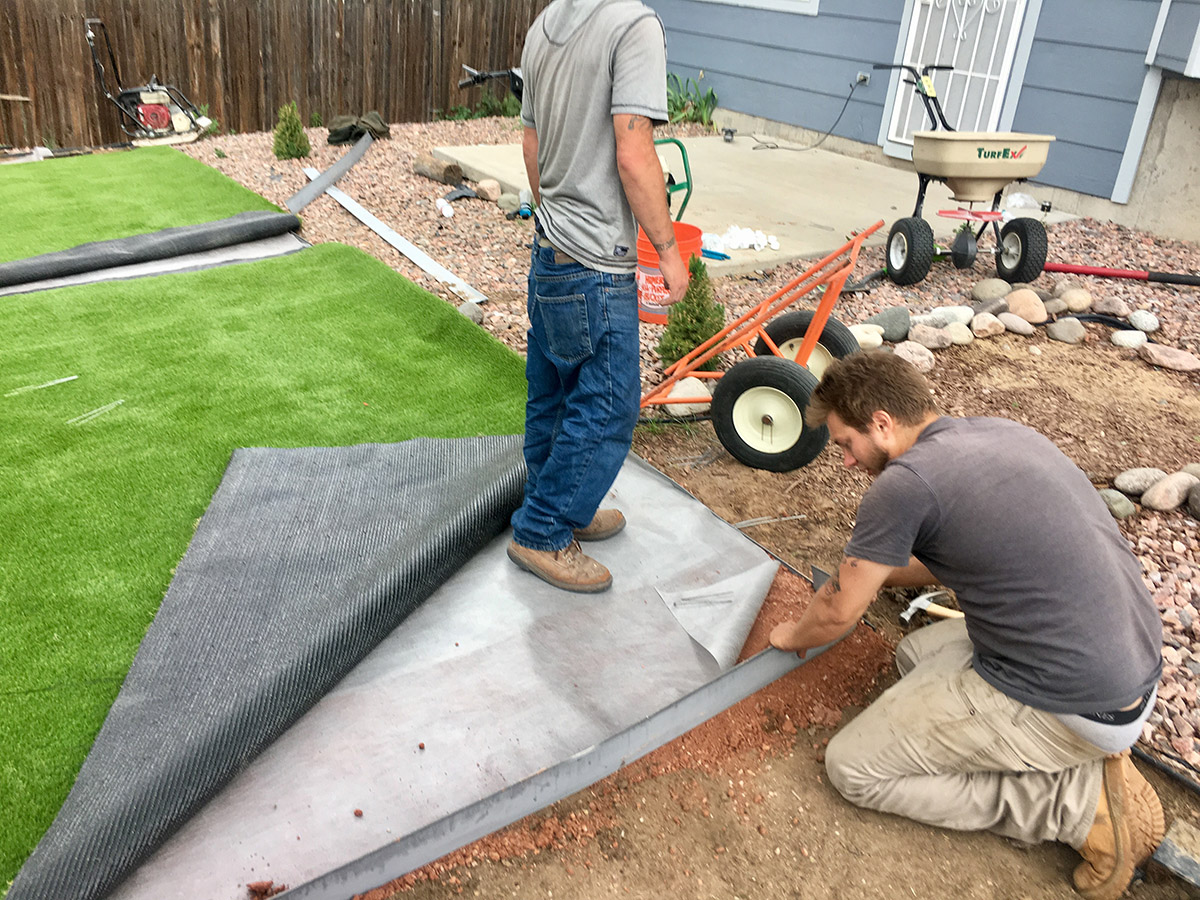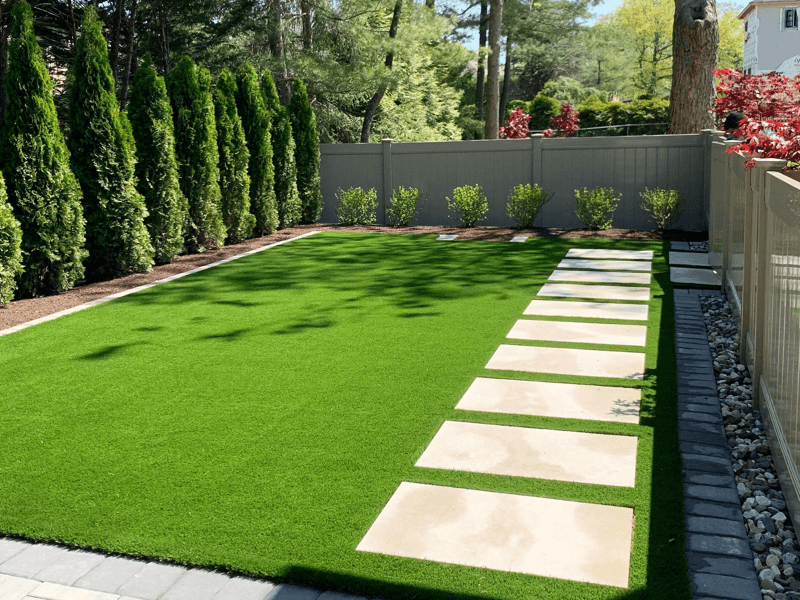Sustainable Arizona Artificial Turf for a All-Season Lush Green Lawn
Sustainable Arizona Artificial Turf for a All-Season Lush Green Lawn
Blog Article
Delve Into the Environmental Conveniences of Opting for Artificial Grass Solutions
The adoption of man-made lawn options offers a compelling possibility to attend to pushing environmental obstacles. By substantially lowering water usage and lessening the application of dangerous chemicals, these choices not just promote sustainable landscape design however additionally secure neighborhood communities. The reduced carbon impact associated with reduced upkeep activities contributes to a more sustainable strategy to land administration. Nonetheless, the implications of these benefits expand beyond mere preservation initiatives, increasing concerns concerning their lasting effect on environment conservation and general ecological equilibrium. Discovering these dimensions reveals an intricate interaction worth thinking about.
Water Conservation Benefits
One of the most considerable benefits of synthetic lawn is its capability to save water. In comparison, man-made grass does not need watering, substantially lowering the total demand for water resources.
By getting rid of the demand for routine watering, synthetic grass adds to sustainable landscape techniques and aids reduce the environmental impact of too much water consumption. The preservation of water extends to the reduction of overflow, which can lead to dirt erosion and waterway contamination.
Additionally, the setup of synthetic grass allows communities and property owners to allocate water resources extra efficiently, concentrating on important usages such as drinking water and agriculture. The shift towards fabricated turf not just advertises responsible water use however likewise lines up with more comprehensive environmental goals targeted at maintaining natural sources.
As neighborhoods progressively prioritize sustainability, the water preservation advantages of fabricated lawn provide an engaging case for its fostering in business and residential landscape design projects.
Reduced Chemical Usage
The transition to synthetic lawn dramatically lowers the reliance on chemical therapies commonly made use of in natural grass maintenance. Conventional turf monitoring typically involves the application of herbicides, plant foods, and chemicals to promote development and control parasites. These chemicals can present risks to human wellness, neighborhood wild animals, and the environment, adding to soil and water contamination.
On the other hand, synthetic grass eliminates the need for these dangerous materials. When mounted, it needs minimal maintenance, primarily being composed of routine cleaning and occasional infill replenishment. This decrease in chemical usage not only profits the immediate atmosphere however additionally contributes to wider environmental stability. By lessening the release of synthetic substances right into the environment, synthetic grass advertises healthier dirt and water systems.
Moreover, the absence of chemical runoff related to synthetic grass installations assists protect neighborhood rivers from air pollution, sustaining marine life and keeping biodiversity. Turf installation phoenix az. As neighborhoods significantly focus on lasting methods, choosing synthetic grass offers a feasible option that lines up with ecological preservation objectives. With this change, homeowner can enjoy lush green areas without endangering ecological health, paving the way for a much more sustainable future
Reduced Carbon Footprint

Additionally, the setup of synthetic grass can result in substantial water preservation. All-natural lawns need substantial amounts of water for irrigation, which not Visit Your URL just includes to the carbon footprint connected with water removal and therapy but additionally strains neighborhood water sources. In comparison, synthetic lawn needs very little upkeep, calling for no watering, thereby dramatically lowering water use and its connected power prices.
Furthermore, the long life of fabricated lawn adds to its reduced carbon impact. With a life-span of up to 15 years or more, the need for frequent substitutes is diminished, resulting in less waste and reduced energy intake in production and throwing away typical grass choices. On the whole, artificial lawn offers a sustainable option for environmentally conscious landscaping.
Habitat Preservation
Habitat preservation is a vital factor to consider in the argument over landscaping selections, specifically when comparing man-made turf to natural turf. All-natural yard yards usually need comprehensive maintenance, including the usage of herbicides, chemicals, and fertilizers, which can adversely impact regional ecological communities. These chemicals can seep right into the dirt and rivers, hurting indigenous plants and fauna and interfering with local habitats.
Man-made turf eliminates the demand for dangerous chemicals, thus securing nearby wildlife and preserving the stability of surrounding ecological communities. The installment of synthetic grass can lead to the conversion of former turf areas into more biodiverse landscapes, such as pollinator yards or click here for more info indigenous plant locations, which can support regional wildlife.
Ultimately, the transition to synthetic grass not only conserves water and reduces upkeep initiatives however likewise fosters a more unified partnership between human activities and the native environment, promoting habitat conservation while doing so.
Long-Term Sustainability
Lasting sustainability is a critical factor in examining the advantages of man-made turf over typical lawn lawns. Among one of the most considerable benefits of artificial grass is its sturdiness; it can last as much as 15-20 years with minimal upkeep, whereas natural yard needs frequent reseeding and substitute. This longevity reduces the demand for continuous sources, such as water, fertilizers, and chemicals, which are essential for keeping a healthy turf yard.
Furthermore, synthetic grass adds to a decrease in carbon emissions associated with grass care tools. Traditional yards frequently call for gas-powered mowers, trimmers, and blowers, all of which contribute to air pollution. Artificial turf companies phoenix. On the other hand, artificial lawn eliminates the requirement for such tools, advertising a cleaner environment
Additionally, the manufacturing of synthetic grass significantly utilizes recycled products, improving its sustainability profile. As manufacturers embrace environment-friendly methods, the ecological footprint of synthetic grass proceeds to decrease.

Conclusion
The adoption of fabricated turf services provides considerable ecological advantages, including substantial water conservation, reduced reliance on harmful chemicals, and a reduced carbon footprint. Synthetic turf aids in preserving natural environments by lessening land disturbance and promoting lasting sustainability via the use of resilient materials. Collectively, these variables emphasize the capacity of synthetic lawn to add positively to environmental wellness and use a viable option to standard landscaping techniques in an increasingly resource-conscious world.
In comparison, synthetic lawn does not need watering, dramatically minimizing the overall need for water resources. By lessening the release of artificial compounds right into the environment, artificial lawn promotes much healthier dirt and water systems.
Moreover, the setup of man-made lawn can result in significant water conservation. In comparison, artificial turf requires minimal maintenance, needing no watering, thereby considerably reducing water use and its linked energy costs.

Report this page